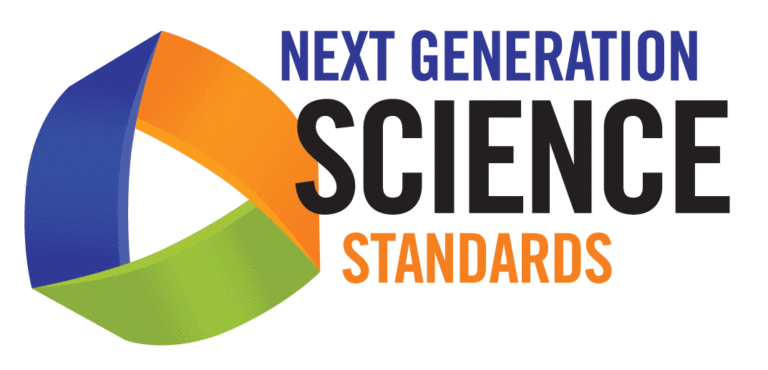Using the Crosscutting Concepts – Patterns
A closer look at one of the Crosscutting Concepts from the Next Generation Science Standards – patterns. Looking for, identifying, and using patterns is a vital concept in science and engineering

Have you ever tried to use information to figure something out or make a prediction? We all have! The process that we use to do this is looking for patterns. There are so many ways to introduce youth to patterns in science. In fact, our brains are wired to look for patterns making us all natural scientists! Looking for, identifying, and using patterns is a vital concept in science and engineering. As something that all youth can participate in, finding patterns is a great way to increase interest and engagement in science. This blog post is one of a series on how to use the Crosscutting Concepts from the Next Generation Science Standards. For this entry in this CCC blog series, I will be talking about the first of these concepts – patterns.
Crosscutting Concept – Patterns
The Crosscutting Concepts (CCCs) are one of the three major dimensions of the Next Generation Science Standards (NGSS) and span disciplinary borders and unify the core concepts in the fields of science and engineering. These seven concepts – patterns; cause and effect; scale, proportion, and quantity; systems and system models; energy and matter; structure and function; and stability and change – help youth develop a coherent and scientifically based worldview and increase their understanding of science and engineering knowledge. Youth get the most out of the CCCs when they are taught explicitly. Therefore, it is vital that informal educators know what the CCCs are and how to use them. Using the CCCs in informal settings help youth to unify their science experiences and learning throughout their lives by providing them with a common vocabulary for science and engineering. For example, the CCC of Patterns is easy to apply over and over again. Youth look for patterns, use their innate curiosity to form scientific questions about the occurrence of patterns, use patterns to analyze and interpret data, and use mathematical and computational thinking to identify patterns. This continual application builds understanding of the term “pattern” in various contexts.
Humans have been hardwired to seek out and recognize patterns from our earliest time. Our brains want to create meaning and structure from the vast amounts of information that we process. Friend or foe? Food or poison? Early humans needed to recognize patterns to survive. Today, this special trait makes us all scientists! From tracking the movements of the heavens to uncovering the structure of DNA, noticing patterns is often the first step on the journey of scientific discovery.

The Oxford English Dictionary defines ‘pattern’ as the regular way in which something happens or a regular arrangement of lines, shapes, colors, etc. The NGSS says “observed patterns of forms and events guide organization and classification, and they prompt questions about relationships and the factors that influence them.” In other words, when youth see patterns, they can begin to unify and categorize information and wonder why and how these things occur. There are many different examples of patterns in science, and these can be simple or complex, microscopic or macroscopic, or physical or conceptual. One of the simplest ways to think about patterns is similarities and differences. By looking for observed similarities and differences between things we can look for patterns that exist. For example, there are observable similarities and differences in the weather such as sunny, cloudy, rainy, and warm or numbers of sunny, windy, and rainy days in a month. By looking for patterns in these observations you could deduce that it is usually cooler in the morning than in the afternoon and the number of sunny days versus cloudy days differs by month. These patterns can be used to predict what the weather might be like during a particular season.
Examples
One example from the world of 4-H and animal science is to use the Crosscutting Concept of Patterns to identify similarities and differences with groups. For example, youth observe similarities and differences between parents and offspring when breeding livestock. They can ask questions such as “what is inherited and what is not? What traits do offspring share with their parents? How can we increase a favorable trait such as bigger pectoral muscles in chickens by selective breeding? Then by seeking to answer these questions, they are engaging in science practices such as planning and carrying out investigations, analyzing and interpreting data, and constructing explanations. To make this purposeful and explicit for youth the 4-H animal science program could include opportunities for youth to communicate the science in their projects through project records or posters at their fair exhibits. This is a great way to explicitly put the science into animal science! The youth need to be aware that they are doing science, using patterns, and be scaffolded in these practices.
Another example comes from the area of water quality. There is a lot of informal science curriculum about water. Plus, water quality is local, global, and connected to social inequality, so it is an extremely relevant issue for youth to grapple with. I know that when I did water quality with youth years ago, we taught them about the indicators before going to a stream and collecting specimens and testing pH and other indicators. The youth then only had to determine if the stream was healthy or not, but they weren’t really doing the science. It was hands on without being inquiry oriented. An easy way to integrate patterns into water quality curriculum is to have youth observe healthy bodies of water and unhealthy bodies of water and determine the differences between them. Youth can observe how various elements such as temperature, flow, pH, and species present compare between various bodies of water, discover patterns, and determine what factors indicate healthy vs unhealthy aquatic ecosystems. You can also do this sort of thing using a card sort which isa way to help students to classify different things into groups. A card sort activity is where the facilitator provides the youth with a set of cards connected to the concept that they are exploring. The facilitator then has the youth sort the cards into groups based on similarities and differences. The important part of card sorts is to not provide much instruction about the types of groups that need to be made so that the youth must look for patterns to determine what possible groups there are.
When youth have repeated experiences with the CCCs throughout their diverse science experiences and education, they will become familiar with the vocabulary of the CCCs and be able to make deeper and more meaningful connections. Context is crucial to making sure that youth are using the CCCs in a way that will benefit them for their entire lives. These concepts should be embedded in whatever science content our programs center on. The emphasis should be on the application of the CCCs. These concepts should be explicit in our programs so that youth have an invaluable takeaway that can be useful to them throughout their lives in many different contexts. What a great way to increase the impact of informal education!
Resources
For more information check out these great resources:
- Video on CCC-Patterns by Paul Anderson
- NGSS Hub from the National Science Teaching Association (NSTA)
- Patterns in Science from Sadler Science
For Further Thought
- How do you use patterns in your program?
- What are ways that informal educators can increase the explicit teaching of patterns?
About the Author
Vanessa A. Klein, Ph.D. is a 4-H STEM Specialist with Maine Cooperative Extension and Assistant Professor of Extension with the College of Education and Human Development at the University of Maine.
CCC Blog Series
In this series of blogs, Dr. Vanessa Klein introduces the seven Crosscutting Concepts from the Next Generation Science Standards. In each post, Dr Klein explains one of the CCCs, describe an informal learning relevant example of the concept, and provide links to valuable resources. Stay tuned!
Related Resources

Skill: Modeling Science Practices
Getting the Most Out of NGSS: Using the Crosscutting Concepts
The Next Generation Science Standards (NGSS) Crosscutting Concepts provide us with a great way to help youth bridge science learning across various contexts.
Learn More
Using the Crosscutting Concepts – Cause and Effect
Learning about cause and effect is a great way to increase interest and engagement in science.
Learn More